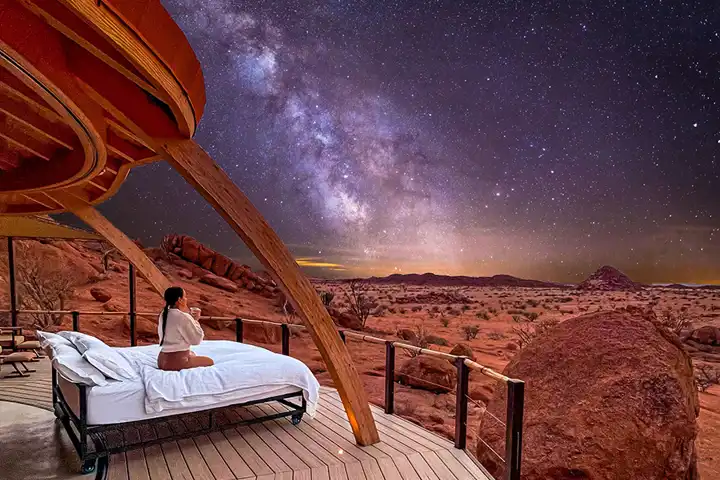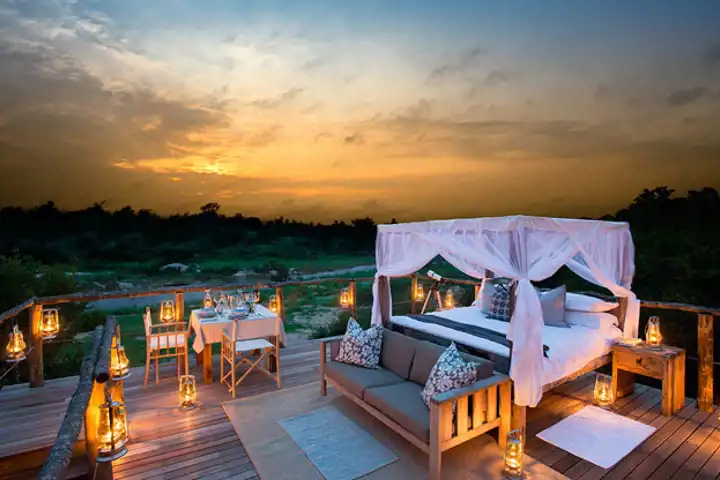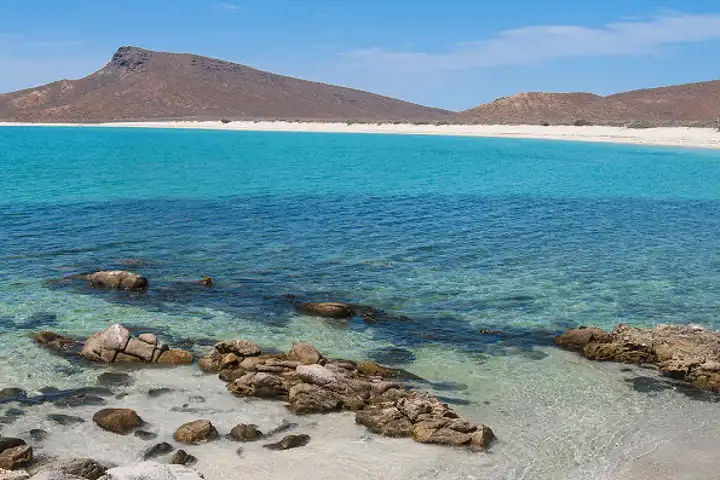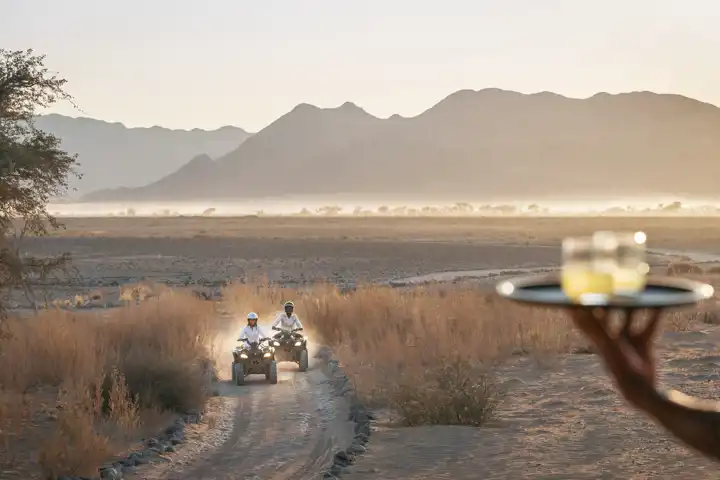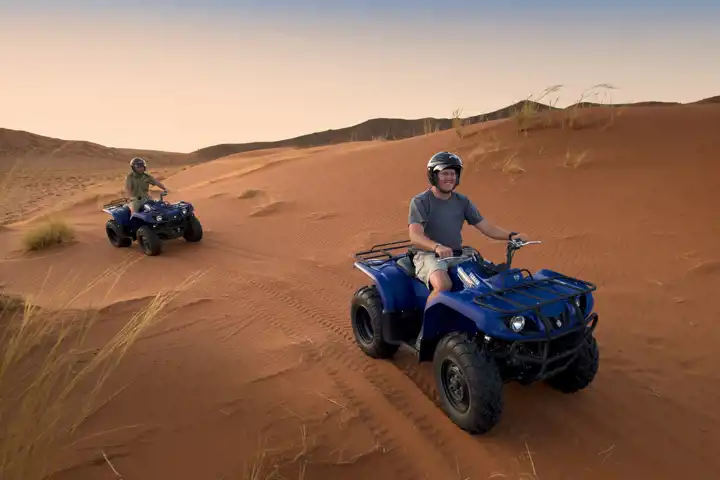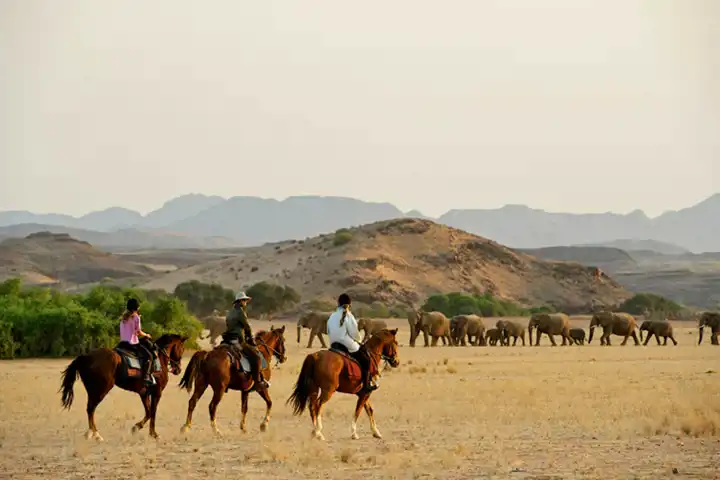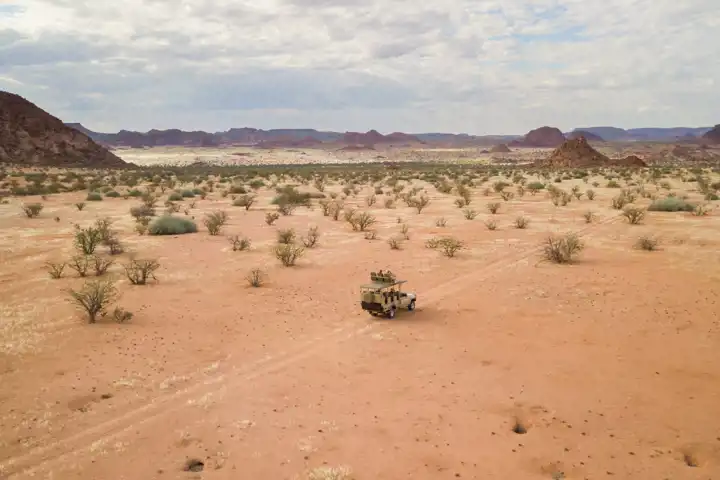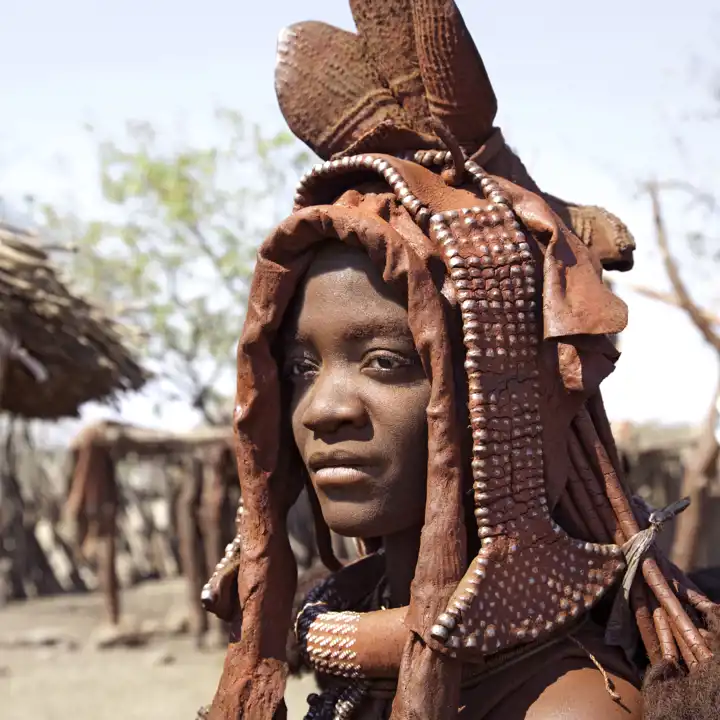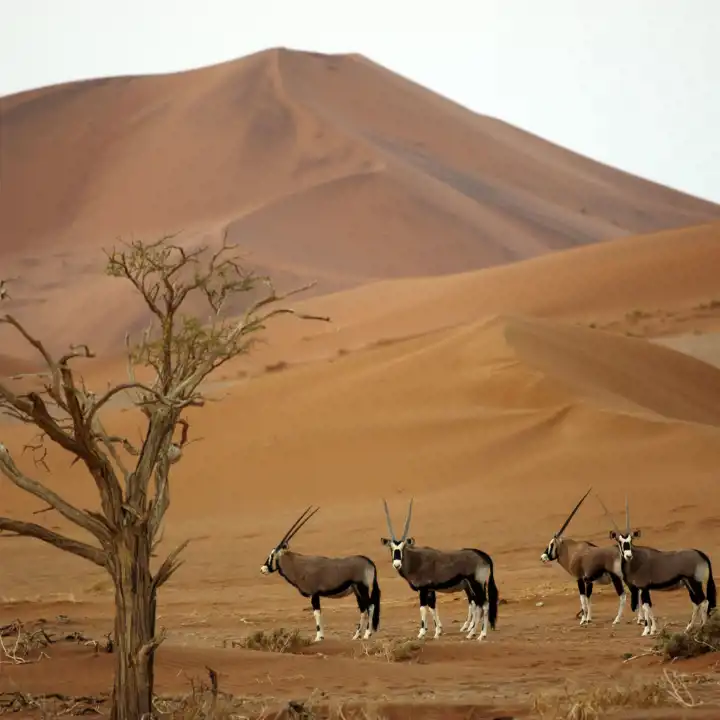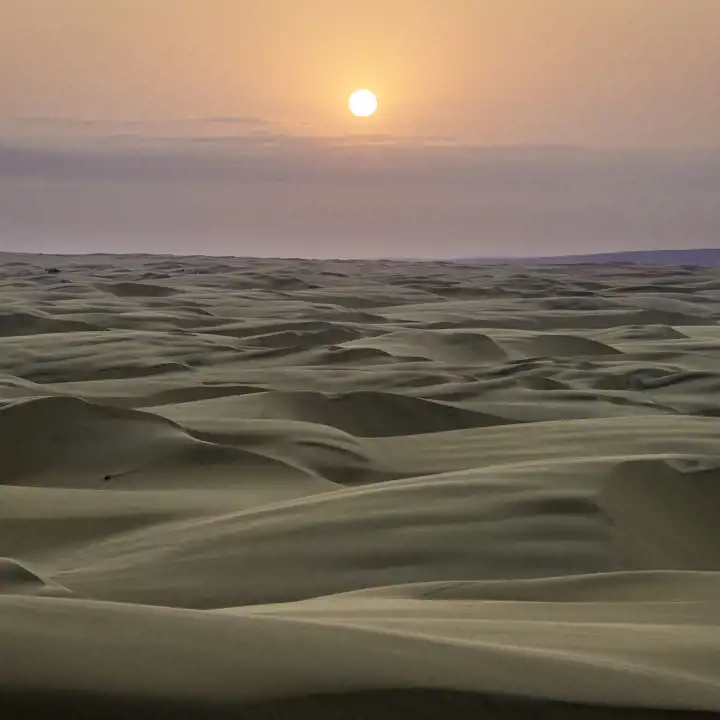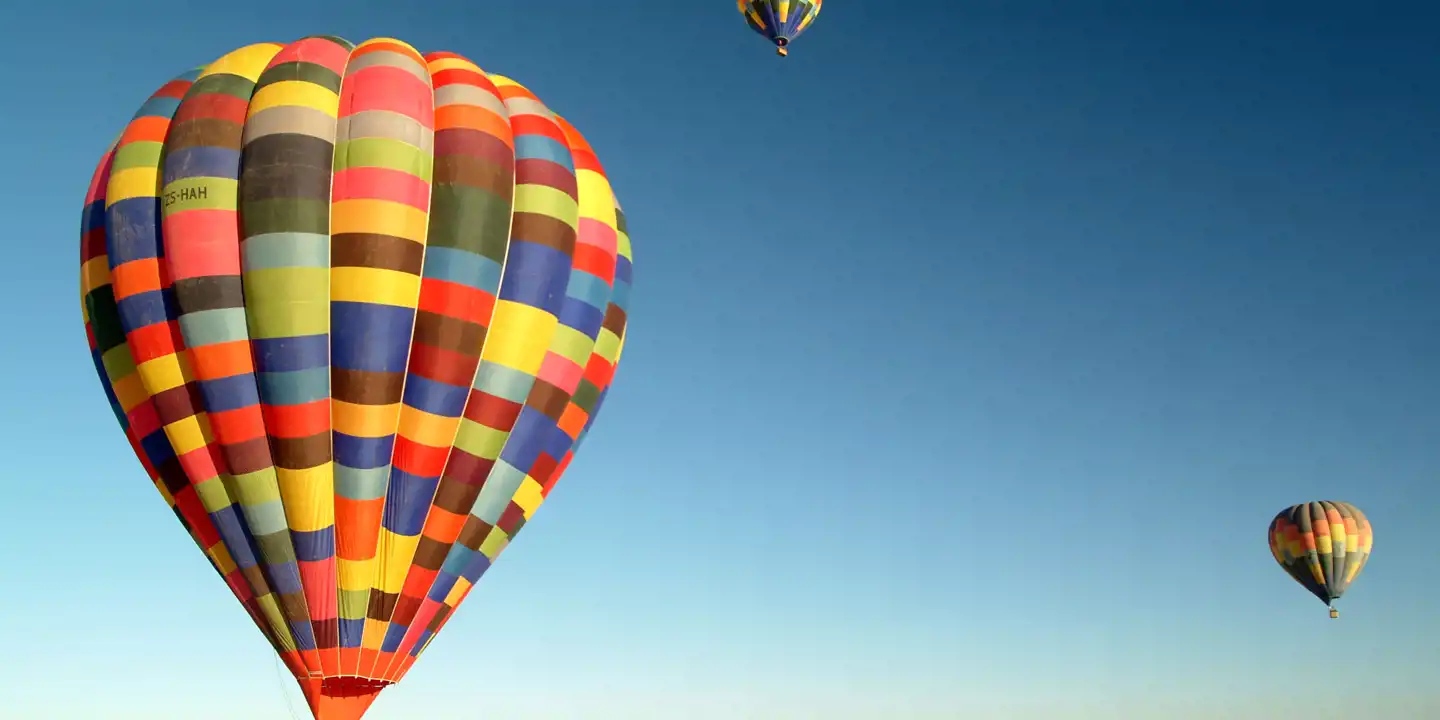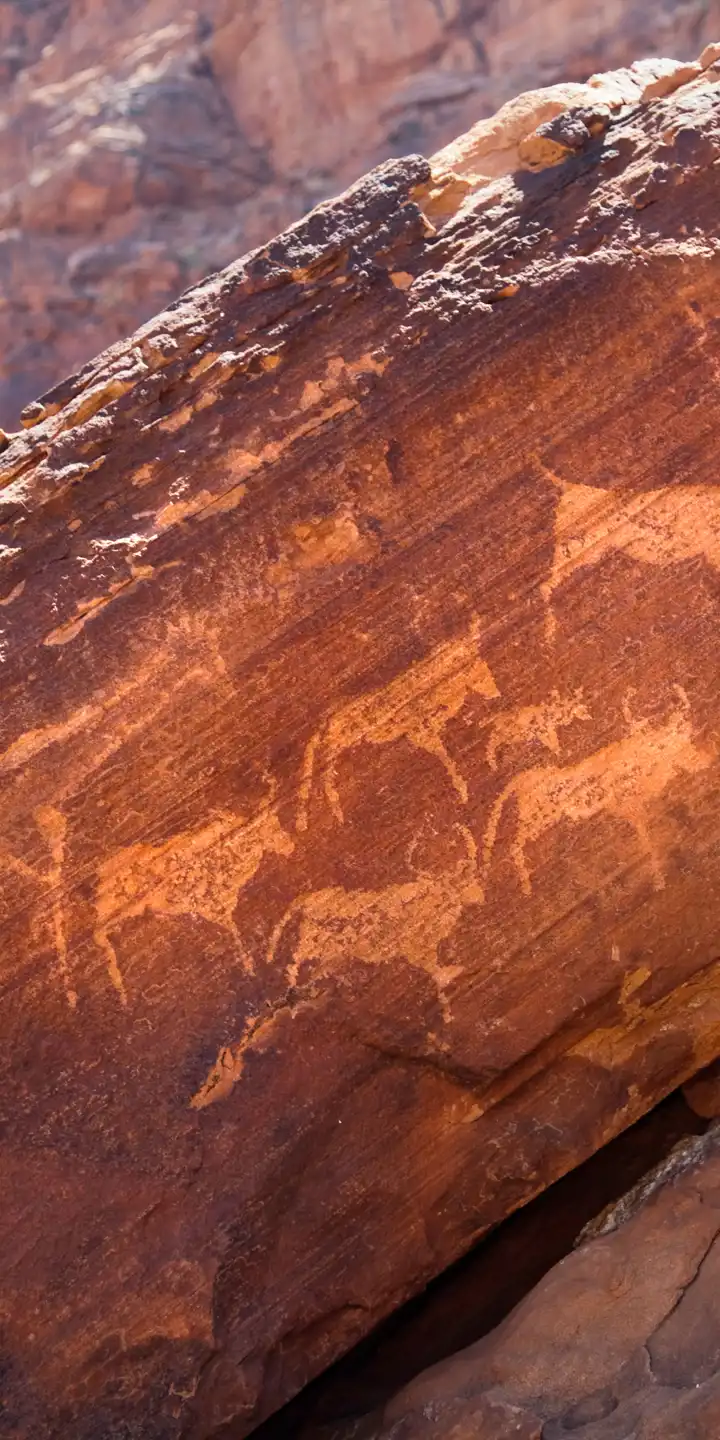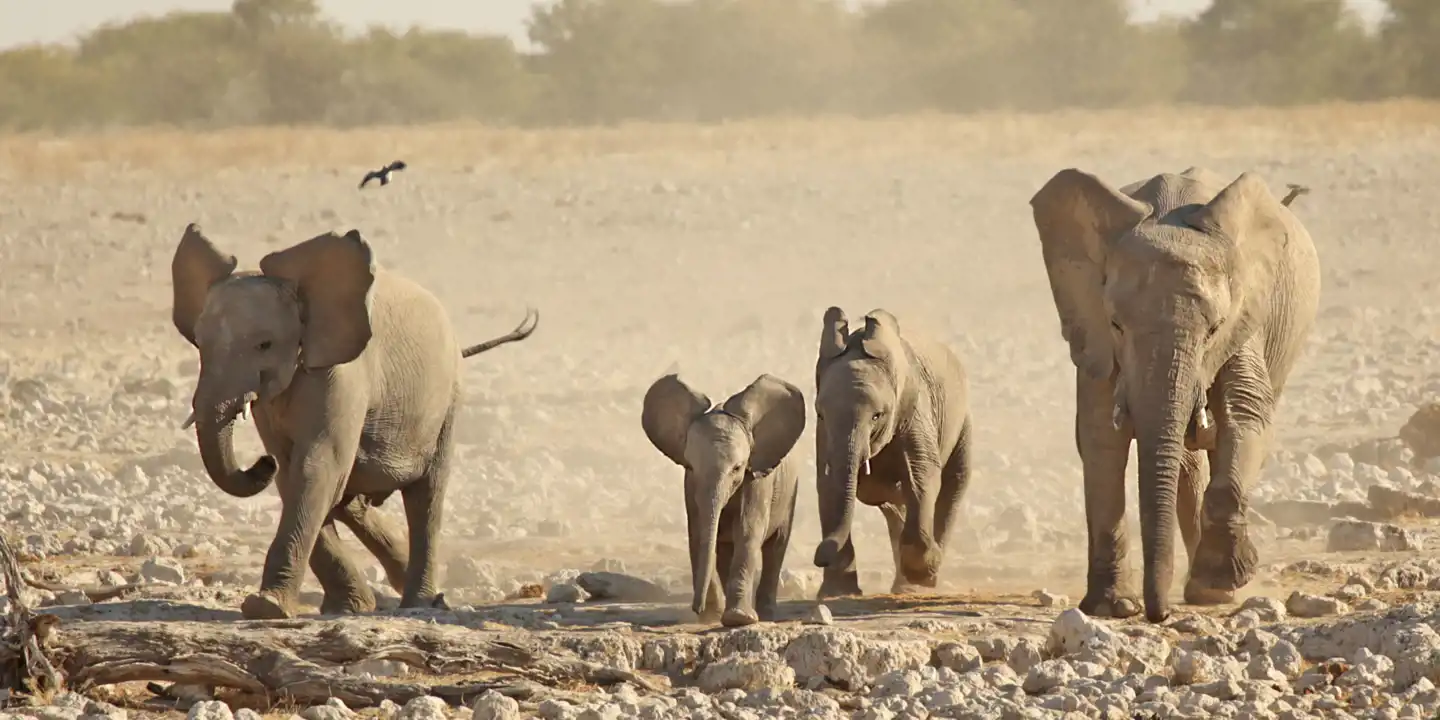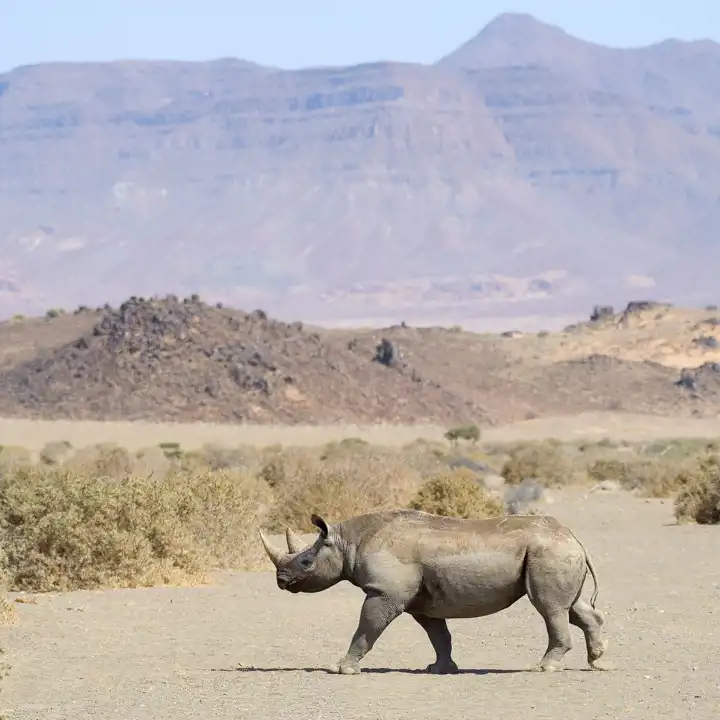Namibia
One of the Most Rugged and Spectacularly Beautiful Countries in the World
Namibia
On the surface, Namibia appears as a wasteland of desert sands, dry rivers, salt pans, and terrain generally inhospitable to any form of life. Long nicknamed “The Land God Made in Anger” by aboriginal communities, it’s a reputation that might be hard to overcome. But even in the harshest conditions of Namibia’s arid landscape, life has found a way to thrive. Desert-adapted elephants, lions, and black rhinoceros are among the wildlife found in this challenging country, isolated by the environment and left free of the persecution its species endures in more populated regions of southern Africa. This wild population makes a Namibia luxury safari an experience that is hard to replicate elsewhere.
Namibia boasts some of the world’s largest natural wonders within its borders. Among them are the etchings at Twyfelfontein, the largest collection of rock art in Africa; Fish River Canyon, the largest canyon on the continent; and Namib Naukluft National Park, the largest protected reserve in Africa. Experience this and more with our Namibia vacation packages.
Namibia with Ker & Downey
Seeing Namibia from above is the best way for the whole of its natural beauty to be experienced. Travel by light aircraft to far-flung airstrips and begin the safari of a lifetime on your vacation in Namibia, flying over some of the world’s highest sand dunes—some towering at 10 stories tall—and witnessing the contrast of the pounding Atlantic Ocean surf against a golden expanse of desert sand. On the ground, it is a privilege to get a close look at the wildlife that has specially adapted to living in the desert environment: elephants who can survive as many as four days without water, zebras who have become agile climbers to survive their mountainous home, and ancient plants that are sustained by the moisture in the fog from the Atlantic coast.
The country itself has survived a harsh political climate too, including German Imperial occupation and control by its neighbor, South Africa, before its emergence as an independent nation in 1990. Namibia today still retains its varied histories and cultures, from the colonial towns and streets bearing German names to the tribal communities who still live a nomadic life in isolation as they have for centuries. A Namibia luxury safari reveals some of the most rugged and spectacularly beautiful country in the world—experience it when you plan your own custom safari to Namibia, crafted by the expert Ker & Downey luxury travel consultants. Discover our Namibia travel packages above.

